Ilankai Tamil Sangam29th Year on the Web Association of Tamils of Sri Lanka in the USA |
|||
 Home Home Archives Archives |
Nuda Veritas on the Broken Palmyra Book:After 20 yearsby Sachi Sri Kantha, September 8, 2010
Well, after 20 years, it's time to do a reality check on the nuda veritas and higher ambitions of these four authors: Rajan Hoole, Daya Somasundaram, K. Sritharan and (late) Rajani Thiranagama. The last time I wrote about these four was in March 2006, when a documentary movie on Rajani Thiranagama’s life was released. I had humorously titled my essay, ‘Three Mules and Sister Rajani’, borrowing from a 40 year-old Holywood movie Two Mules for Sister Sara, starring Clint Eastwood and Shirley MacLaine. In this movie, Shirley MacLaine adopts the role as Sister Sara to escape from a precarious situation she faced, while being a prostitute. This had pinched a nerve of Prof. S.R.H. Hoole, one of Rajani Thiranagama’s pasl. He insinuated to me later that I had called Ms. Thiranagama as a prostitute. I did nothing of the sort. Either his misunderstanding merely exposed this professor’s minimal skill in comprehending current English usage or his penchant for distorting the presented message according to his convenience. It has been twenty years since the revised version of The Broken Palmyra book was promoted, while I was staying in Philadelphia. I sent a check for $14.00 to the contact address (Sri Lanka Studies Institute, Claremont, California), and received a copy, with the sender’s name clearly noted as S.R.H. Hoole. Later I came to know that this guy’s older brother Rajan Hoole was the lead author among the four for the Broken Palmyra. I contributed my ~1,500 word review of this book to the Tamil Nation (London) print edition. While the TamilNation website was in existence, the complete text of my review was posted on it. As this site closed last January, for the benefit of those who wanted to check my review, first I re-post it here. Then, I provide ten noticeable faults and omissions in The Broken Palmyra book. While re-reading the review now, of what I wrote in 1992, I admit that I have been rather mild in my criticism. One reason was that, as it was the first attempt of four authors and they modestly claimed in the first preface (April 1988), “We are not professional writers or historians. But we started writing in earnest, in response to a deeply felt need, with no idea of how we are going to publish our writings.” This acknowledgement of their demerit charmed me then. Now after 20 years, the antics, propensities and posturings of the living three authors as the ‘guardians’ of Eelam Tamils’ health and welfare deserves a reappraisal of The Broken Palmyra. Among the four authors, Rajani Thiranagama (1954-1989) was a junior acquaintance of mine, during my undergraduate years at the University of Colombo. I hardly know the other three. After Ms. Thiranagama’s death in 1989, the other three authors have engaged in a career of writing for the past 18 years, attempting to be “historians” of a grade! I have taken a different view on the theme of Tamil Nationalism from what these three have reported. As such, now I have to be more critical of the lapses that I noticed in The Broken Palmyra book, though it is praised as a ‘seminal book’ by some. This claim is debatable, and deserves a separate treatment. Book Review: The Broken Palmyra: The Tamil Crisis in Sri Lanka - An Inside Account by Rajan Hoole, Daya Somasundaram, K. Sritharan and Rajani Thiranagama, Sri Lanka Studies Institute, Claremont, CA, 1990, 464pp by Sachi Sri Kantha [Tamil Nation, London, April 1992, p.14] There is a story, probably apocryphal, about the successful mission of Swami Vivekananda to Chicago in 1893. One American industrialist invited Swami to visit his newly built meat-processing plant. The massive plant had been designed with a huge inlet with a diameter of 15 ft on one extreme and four smaller outlets with a diameter of 2 ft on the other extreme. The industrialist boasted to Swami: ‘We push live cattle into the inlet at this end and in 10 minutes, we get clean meat, bones, hide and waste material separately in the four outlets from that end. What do you think of this production line?” Without missing a beat, the great Swami delivered the kicker: ‘That’s fine. But, if you send back the clean meat, bones, hide and waste material from that end, can you retrieve the live cattle at this end?”
One can also equate the symbolism of the meat-processing plant of the Chicago industrialist to the lives of youth who happened to be in the Jaffna peninsula in the 1980s decade. All had been pushed into the meat-processing plant (equated to the Eelam struggle) and the products which were delivered in the outlets seem to be of diverse categories; some meat, some bones, some hide and some waste material. In the preface, while acknowledging that they “are not professional writers or historians” authors note that the main purpose of writing the book was to “face the truth in all its nakedness, both about ourselves and about all those who purported to be our saviours.” The book consists of a total of 16 chapters, excluding the concluding sections entitled, ‘epilogue’ and ‘postscript’. The first nine chapters consisting the volume 1 of the book provide a historical background to the current Tamil ethnic crisis in Sri Lanka. Of these, coverage of the political events of the post-1983 period is the major contribution of this book. These include the birth and growth of the Tamil militancy, the excesses of Sinhalese military on Tamil civilians, the Vadamarachchy Thumb-nail character sketches of the LTTE leaders, scattered in the book make some revelational reading: (1) Prabhakaran: “Using unpromising material his will forged together a force, the LTTE, which made the world sit up. A government in Colombo which treated the Tamil problem with derision in 1978 and savagery in 1983 was shaken to its foundations. In time, New Delhi too became unsure. Washington took a keen interest. Where lesser mortals would have chosen to call it off, Prabhakaran persisted.” (2) Mahattaya: He “had a childhood steeped in want. He is very much a loner and is not much of a public man…Those who befriended him in old times can perhaps claim a hint of loyalty that did not quite approach friendship.” (3) Kittu: “He had dispatched tens of (foreign) agents in his time, without giving it any more thought that he would in deciding to have a cup of tea…Amongst his men, there were those who resented his flamboyance. But in battle, they trusted his leadership as few others was trusted.” (4) Anton Balasingham: “ a former British High Commission employee, who later wrote a doctoral thesis on Hegel, was a teacher of poltical science at a British polytechnic. He could also converse ably on philosophical subjects. After July 1983 he moved to Madras with his Australian wife Adele to be full time spokesman for the LTTE.” Since the book is a collective endeavour of four academics (who held positions in the Departments of Anatomy, Psychiatry and Mathematics of the University of Jaffna), an uneven flow of the narration in the text could be easily noticed. It is a mixture of chronological summary of events and lecture notes in psychiatry, interspersed with “sermonizing the sinners”. Also, one could perceive a subtle sarcastic tone by the authors about the use (and interpreted abuse) of Hindu religious symbols by the LTTE militants in Jaffna. It is my opinion that this sarcastic tone emanates from the “You are all sinners” attitude taken by one author, who “subscribes to the view that the ills of society come from a loss of moral commitment or a failure to obey the voice of God.” In the search for their “truth in all its nakedness”, authors point accusing fingers on everyone for creating “the tragic mess” in Sri Lanka; Tamil political leadership from S.J.V. Chelvanayakam to A. Amirthalingam, Tamil militants (all the groups which originally identified with the Eelam movement, including the LTTE), expatriate Tamils, Tamil intelligentsia, Sinhalese power-brokers, Sri Lankan (Sinhalese) army, Indian politicians, Indian army, Research and Analysis Wing (the Indian Intelligence Service) and last but not the least, the Tamil society as a whole. This is like giving equal punishment to the mass murderer, rapist, petty thief, con artist and the victim! Regarding the intellectual drought currently experienced in Sri Lanka, authors state in one sentence: “Where the use of English has declined and wholesome alternative reading in the local languages is hard to come by, opportunities abound for charlatans within and without the universities who can throw around some big words and big names from the West” (p.350). I wonder whether the authors themselves stand accused of ‘throwing around some big words and big names from the West’. The book is splattered with lengthy quotes from western intellectuals such as Lenin, Arnold Toynbee, Sigmund Freud, Eric Fromm, T.S. Eliot, Gene Sharp and Martin Luther King Jr. Authors also agonise about the inability of many Tamil militant groups to unite under one leadership. This is a valid point and all the peace-loving Eelam Tamils also ponder about this disunity. But one should also ask whether only Tamils suffer from this malady. In reality, many factions exist in the PLO and in-fighting does occur between the camps of Nelson Mandela and Inkata chief Buthelezi. Even the great Mahatma Gandhi could not bring all the freedom fighters in India under one wing. Once he lamented; “If we Indians could only spit in unison, we would form a puddle big enough to drown 300,000 Englishmen.” And some like Jinnah and Subhas Chandra Bose did refuse to ‘spit in unison’ with Gandhi. This being the case, I feel that the authors have been too harsh in their criticism on the disunity among the Tamil rebels. In one of their conclusions, authors also infer: “Nonviolence would have been far less costly, if the Tamils had been voluntarily prepared to suffer even a little of what they underwent during the war. More importantly we would have come out a united and strengthened community.” (p. 384) This inference reveals the ignorance or amnesia of the authors to the historical realities of the freedom movement in India (see, Gandhi’s ‘spitting in unison’ quote mentioned above) and the nonviolent campaigns led by S.J.V. Chelvanayakam for two decades between 1956 and 1976. Even when Chelvanayakam led the non-violence movement, the Tamil community could not come out ‘united’. Why? Furthermore, Mahatma Gandhi himself had explained that violence does have a place in society. In the Young India of Nov. 4, 1926, Gandhi wrote, “Taking life may be a duty. We do destroy as much life as we think necessary for sustaining our body. Thus for food we take life, vegetable and other, and for health we destroy mosquitoes and the like by the use of disinfectants, etc. and we do not think that we are guilty of irreligion in doing so…for the benefit of the species, we kill carnivorous beasts…Even manslaughter may be necessary in certain cases. Suppose a man run amuck and goes furiously about, sword in hand, and killing anyone that comes in his way and no one dares to capture him alive. Anyone who dispatches this lunatic will earn the gratitude of the community and be regarded as a benevolent man”. On how many occasions, not even a man but the whole army had “run amuck…killing anyone that comes its way” in Eelam? It seems that the authors have tried their best not to logically explain that the emergence of the LTTE among Tamils after two decades of support to nonviolent campaigns by Chelvanayakam was due to an adversary’s army “running amuck and killing anyone that comes its way”. Overall, I do applaud the authors for providing an excellent chronological synopsis of events which happened in the Jaffna peninsula from 1983 to 1989. This is the most notable contribution of this book to the history of Eelam Tamils. However, I find it difficult to agree with their sociological and psychological interpretations relating to the development of the Liberation Tigers. ***** Ten Noticeable Faults and Omissions in the Broken Palmyra book (1) Mangled Logic
One can cite more than one example from the book. I provide one. In Chapter 1, the authors state that, “After the 1977 elections, the TULF’s…political activity should have been directed at finding a common cause with a country-wide opposition and to isolate the racist elements…” (p.13). The so-called ‘country-wide opposition’ after 1977 was the SLFP with reduced parliamentary strength of 9 MPs and all the ‘Left’ parties (LSSP, CP etc.) which had no parliamentary representation. The same SLFP, LSSP and CP during their previous tenure (1970-77), had trampled on Tamil rights with disastrous consequences. Then, in Chapter 2, the authors state that, “It must also be mentioned that Mrs. Bandaranaike’s government contributed to these developments by the methods it adopted…”(pp.17-18). Not mentioned here was the postponement of the Kankesanthurai constituency by-election for over two years by the ruling SLFP-LSSP-CP combine! How could the TULF convince the Tamil voters if it found “a common cause with the country-wide opposition” after 1977? (2) Overrating the benefits of nonviolence
Historical naivete of the four authors on this issue seems incredulous. The benefits of nonviolence had been disposed in the country of its origin (India), after its defeat against China in the 1962 border-war. Mahatma Gandhi’s protégé Jawaharlal Nehru was less convinced that nonviolence offered a viable benefit in the polarized world that was crazy for armaments of every kind in land, sea and air. In his Playboy magazine interview of 1963, to a question, “Do you consider nonviolence to be an effective tool of international diplomacy today?”, Nehru had answered “The efficacy of nonviolence is not entirely convincing. None of us would dare, in the present state of the world, to do away with the instruments of organized violence.” Many historians have commented that nonviolence as a weapon could have worked only against the British imperialism, but not against the white-skinned Aryan aggression of Hitler. If Nehru himself had given up nonviolence as a tool of diplomacy, after his bitter experience with China in 1962, why should Tamils fool themselves with an outdated blunt weapon that won’t work against brown-skinned Aryan aggression? In Sri Lanka, nonviolence failed badly as an method for Chelvanayakam and Amirthalingam, from 1956 to the early 1970s. For all their posturing about Gandhi and nonviolence, it seems that the knowledge of the four authors about the Indian freedom movement is shallow indeed. (1) There had been rivalry between Gandhi’s lieutenants, especially the conflict between Nehru and Vallabhbhai Patel. (2) There had been violence, bloodshed and loss of millions of lives when freedom came to India in 1947 and Pakistan (West and East) was created. (3) The Congress Party led by Gandhi and Nehru claimed the sole representative status. It did not accept other dissenting voices. (4) They couldn’t even grasp Gandhi’s thoughts on mistakes, errors and sin! Here is one of Gandhi’s gems, as provided by William Shirer: “In our new freedom we may make mistakes. Freedom is not worth having if it does not connote freedom to err and even to sin. If God has given the humblest of His creatures the freedom to err, it passes my comprehension how human beings, be they ever so experienced and able, can delight in depriving other human beings of that precious right.” (3) Masking the origin of UTHR (J) to the readers, as the parent UTHR belonged to the virulently racist JVP.
I have previously elaborated on this theme. If the authors were so sincere in their declaration, “we must face the truth in all its nakedness, both about ourselves…”, why did they hide the details on this issue, in their First and Second Prefaces for this book? (4) Sloppy reasoning of karma concept
To insult and insinuate the LTTE’s bad deeds, the authors provide the following example:
I’d like to ask, which Hindu text or authority prescribes such a selective use of the karma principle for LTTE deeds? As no saner Tamil would consider any of the four authors of the Broken Palmyra as competent enough to comment about Hindu faith on karma, I’ll present the authentic view of Hindu philosopher Sarvepalli Radhakrishnan, on what karma is:
(5) A fetish with ‘traitor’ and ‘martyr’ words
In more than one occasion, the authors state, “The FP and later the TULF had demanded allegiance to one party as embodying the destiny of the Tamil nation. All others were branded as traitors of various shades.” (p. 100). Again, they reinforced it, “It is hardly surprising that the propaganda thrust of the struggle must hinge around the two words ‘traitor’ and ‘martyr’.” It appears to me that Hoole and Thiranagama, being Christians, haven’t read the Bible and the first 300 years of Christian history. There was Judas Iscariot, the arch-traitor and many martyrs among the 12 apostles of Jesus. Then, we have Stephen, the first Christian martyr, who was one of seven deacons chosen to help the twelve apostles. For his missionary activities, Stephen was driven out of Jerusalem and stoned to death. If orthodox Christianity has traitors and martyrs, what is wrong with LTTE having its traitors and martyrs?
(6) Simplistic inferences without solid data to support the view
Here is one. “It is believed the Prabhakaran’s coming in January 1987 to Jaffna had something to do with Kittu’s ambitions.” (p. 94) In my Pirabhakaran Phenomeon (2005) book, I have analyzed five different versions on why Prabhakaran left India at the end of 1986. What the Broken Palmyra authors stated was the Indian intelligence operative’s version. Later, J.N. Dixit (India’s top honcho in Colombo, during 1986-89) wrote as follows: “By the end of 1986, Prabhakaran was disillusioned with his Indian connection. The pressure generated on the LTTE after the Bangalore SAARC Summit made him decide that he must shift his base to Sri Lanka for a long struggle. His judgement has been proved correct with the passage of time.”
The book suffers from notable convenient omissions such as America’s revolutionary war of 1770s against the British, where the Americans split themselves into Patriots and Loyalists. If George Washington and his patriots used guns to fight for their liberation against their aggressors, then what was wrong for Prabhakaran to adopt the same method? Even in India’s freedom struggle against the British imperialists (1920-47) some such as Subhas Chandra Bose, Ambedkar and Jinnah were opposed to Mahatma Gandhi’s leadership and the pretense of nonviolence. (8) Omission of the 1984 kidnapping of Stanley and Mary Allen couple in Jaffna, by the EPRLF group
I cannot fathom why the authors of Broken Palmyra who were nit-picking on many of the LTTE’s faults, completely omitted mentioning the EPRLF’s kidnapping of an American couple in Jaffna. This botched incident for ransom involved Sri Lanka, India and USA and brought bad publicity to the Tamil Eelam cause in the American media. It tainted the name of “Tamil Tigers”, as a whole. Even the fence-sitting Hindu (Madras) daily, then presenting an anti-GOSL spin in its editorial, wrote about this kidnapping as follows: “The release unharmed of the young American couple kidnapped earlier from their Jaffna residence by elements claiming to belong to the military wing of the Eelam People’s Revolutionary Liberation Front (EPRLF) is a happy outcome which provides fresh evidence of the seriousness and reliability of India’s good offices in respect of the Sri Lanka crisis…The mode of delivery of the hostages – reportedly in a jeep at the Bishop’s house in the heart of Jaffna even as the security forces were combing Tamil areas intensively – was also significant. Such details speak to the kind of popularity and rapport with citizens that the Sri Lanka Government enjoys in the Tamil areas…” [May 17, 1984] The Hindu was then hard-pressed to cover-up the GOSL allegations that the Indian government, via RAW agency, was training Tamil militants in the Tamil Nadu. Few have inferred that the authors of Broken Palmyra had a soft corner for the EPRLF, as it espoused pro-Marxist views, had some Sinhalese bourgeoise radicals sympathisers (Dayan Jayatilleka, for example) and less interest in Tamil nationalism per se; as such, they conveniently omitted this incident from their catalogue of incidents. Thanks to the MGR: Man and Myth memoir by Kondath Mohandas, MGR’s Man Friday, we have a complete record on the activities of the culprits, especially Douglas Devananda, in this episode. (9) Hypocrisy
Again, if the authors were so sincere in their declaration, “we must face the truth in all its nakedness, both about ourselves…”, why they couldn’t provide a complete accounting of the funding (how much they received) they received from the “Asian Human Rights Commission, Kowloon, Hongkong and the Uniting Church Justice Fund, Australia” and other sources for publication of this book, and how many books were printed for sale. (10) Utter lack of anthropological/sociological knowledge (either by degree or publications) by the authors, when they wrote the book.
Rajani Thiranagama had her strengths, but she was no Margaret Mead! For verification, I checked the publication record of the four authors, between 1980 and 1990 in authentic international indices. Thiranagama and Somasundaram had medical degrees, as such I checked the National Library of Medicine (NLM) database. Thiranagama had one publication in June 1989, three months before her death. Overall, NLM database lists 3 of her publications, two appeared posthumously. All were based on her 1986 Ph.D. thesis submitted to the University of Liverpool. Somasundaram had not a single publication recorded in the NLM database during the 1980s decade. Hoole and Sritharan identified themselves as mathematicians, and of course, they were no Bertrand Russell. I checked the Mathematical Reviews (published by the American Mathematical Society) for any publications of them, between 1980 and 1990. Hoole had authored three papers in 1986, probably based on his Ph.D. thesis. For Sritharan, I couldn’t find a single publication of his in mathematics, between 1980 and 1990. Of course, as Eelam Tamils, they have a right to publish a book about Tamils. But, what I question was their posturing as ‘experts’ on the theme they covered. After 20 years, I sum up my verdict on the Broken Palmyra book, with the following limerick. In Jaffna there lived four learned fools However, I record a personal benefit from this book. Though a Hindu, reading this book made me interested in checking repeatedly the Bible, for transgression of phony Christians whose words and deeds hardly match. In conclusion, there was one revealing sentence in the book that I agree with one hundred percent. It appears in page 43. “The old habit of the Tamil elite being voluntary slaves to the Sinhalese ruling class, from whom they received patronage, had not changed.” It fits perfectly to the three living authors of the Broken Palmyra. Their shameless record since Rajani Thiranagama’s death on September 1989 proves it. ***** References
Anon: Jawaharlal Nehru – a candid conversation with the architect of modern India. Playboy (Chicago), Nov. 1963, pp. 51-66. Calvocoressi P: Who’s Who in the Bible, Penguin Books, London, 1999. Dixit, J.N: Assignment Colombo, Vijitha Yapa Books, Colombo, 1998. Hoole M.R.R: Forcing and consistency results for recursion in 3E together with selection over. Zeitschrift fur Mathematische Logik und Grundlagen der Mathematik 1986; 32(2): 107-115. Hoole M.R.R.: The least a for which E(a) is inadmissible. Journal of Australian Mathematical Society ser.A. 1986; 41(2): 143-151. Hoole M.R.R.: Plus-1 results for E-recursion. Zeitschrift fur Mathematische Logik und Grundlagen der Mathematik 1986; 32(5): 473-479. Radhakrishnan S: The Hindu View of Life, Macmillan Co., New York, 2nd printing, 1968. Shirer WL: Gandhi- A Memoir, Washington Square Press, New York, 1982 printing. Thiranagama R, Chamberlain AT, Wood BA: Comparative anatomy of the forelimb veins of primates. Journal of Anatomy, June 1989; 164: 131-144. Thiranagama R: Nerve supply of the human vastus medialis muscle. Journal of Anatomy, June 1990; 170: 193-198. Thiranagama R, Chamberlain AT, Wood BA: Character phylogeny of the primate forelimb superficial venous system. Folia Primatologica, 1991; 57(4): 181-190. *****
| ||
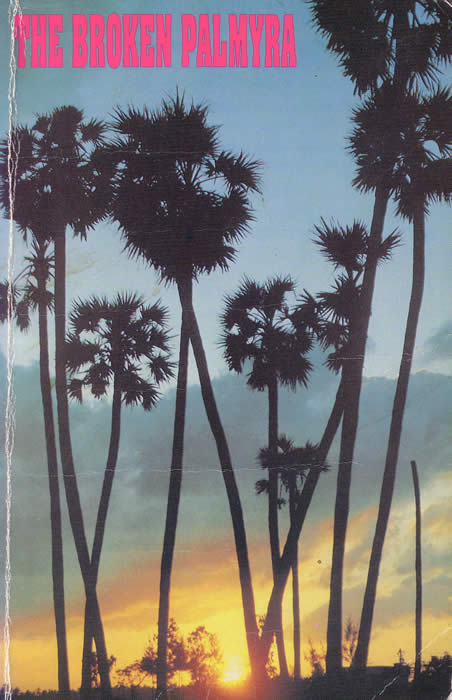 Nuda veritas is the Latin equivalent of ‘naked truth’. In the first preface (April 1988) by the authors of the Broken Palmyra, the phrase appears in the first sentence of the second paragraph. To quote, “We felt strongly that the community must revive, and to do so we must face the truth in all its nakedness, both about ourselves and about all those who purported to be our saviours.” Quite a presumptious declaration that the authors wouldn’t live up to!
Nuda veritas is the Latin equivalent of ‘naked truth’. In the first preface (April 1988) by the authors of the Broken Palmyra, the phrase appears in the first sentence of the second paragraph. To quote, “We felt strongly that the community must revive, and to do so we must face the truth in all its nakedness, both about ourselves and about all those who purported to be our saviours.” Quite a presumptious declaration that the authors wouldn’t live up to!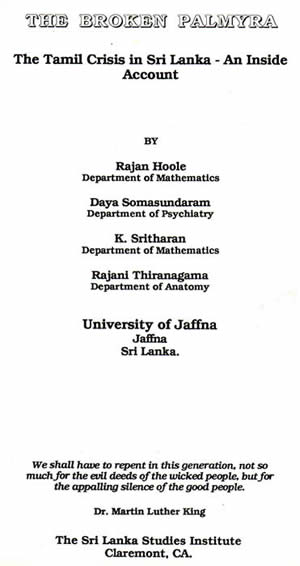 The overall theme of the book, Broken Palmyra, reflects the concern Swami Vivekananda had for the live cattle in this story. In essence, “What went wrong? Had we been led by a casual acceptance of violence as a tool to disregard the value of all life?” (p. 184).
The overall theme of the book, Broken Palmyra, reflects the concern Swami Vivekananda had for the live cattle in this story. In essence, “What went wrong? Had we been led by a casual acceptance of violence as a tool to disregard the value of all life?” (p. 184).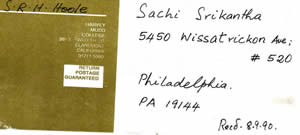 Campaign of 1987, Rajiv-Jayewardene Peace Accord and Indian army’s entry into Eelam. The six chapters in the volume 2 section covers the Indo-LTTE war and its consequences. The penultimate chapter is entitled ‘A perspective on nonviolence’. The text is supplemented with six useful appendices.
Campaign of 1987, Rajiv-Jayewardene Peace Accord and Indian army’s entry into Eelam. The six chapters in the volume 2 section covers the Indo-LTTE war and its consequences. The penultimate chapter is entitled ‘A perspective on nonviolence’. The text is supplemented with six useful appendices.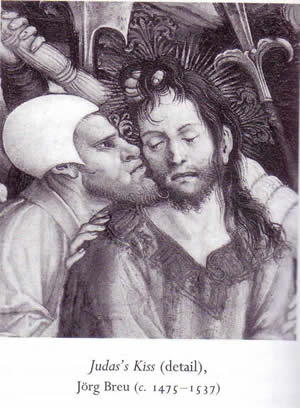 There were traitors in the American war for liberation. Haven’t the authors heard of Benedict Arnold and Count Rumford? There were traitors in the Indian freedom movement as well, who secretly sold out to the British imperialists, after being activists for the Indian freedom movement. One of them was Maulana Shaukat Ali.
There were traitors in the American war for liberation. Haven’t the authors heard of Benedict Arnold and Count Rumford? There were traitors in the Indian freedom movement as well, who secretly sold out to the British imperialists, after being activists for the Indian freedom movement. One of them was Maulana Shaukat Ali.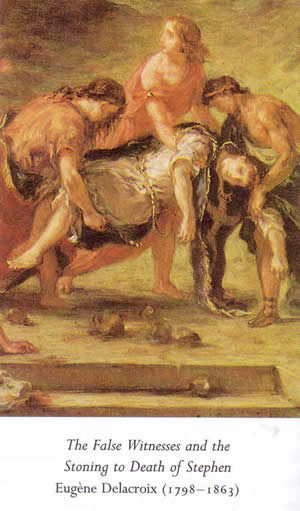 (7) Lack of comparison of LTTE’s campaign, with that of freedom/liberation struggles that had occurred in other nations
(7) Lack of comparison of LTTE’s campaign, with that of freedom/liberation struggles that had occurred in other nations